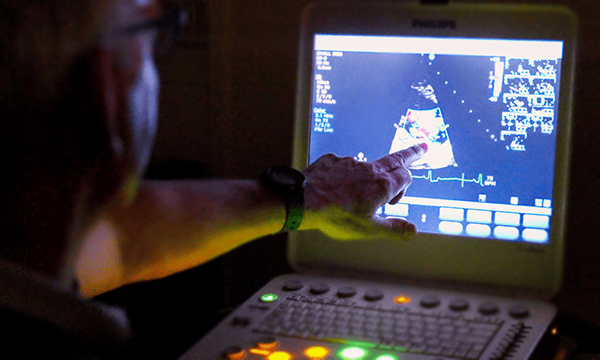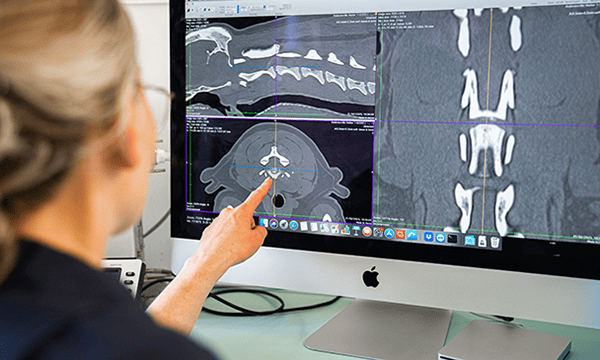The most used and widely available forms of diagnostic imaging include x-rays and ultrasound, which are offered at Brentknoll Vets.
What is an ultrasound?
An ultrasound is a non-invasive procedure that gives a 2D, real-time image of your pet's organs.
Ultrasonic waves are transferred from a handheld probe to the animal and bounce off tissue to send waves back to the probe to form an image on a screen.
 Ultrasound is useful for investigating issues such as:
Ultrasound is useful for investigating issues such as:
- Vomiting and diarrhoea
- Potential foreign bodies (any ingested materials that shouldn't be there)
- Cystitis/ Bladder stones
- Kidney disease
- Adrenal disease
- Pancreatitis
- Birth problems
- Pregnancy confirmation
- Cardiac disease (ultrasound of the heart is called echocardiography)
- Laboured breathing
What does an ultrasound involve?
For ultrasound to be performed, an animal must lay still, often on its side. In many cases, animals will allow ultrasounds to be performed consciously; however, if animals are particularly anxious or in pain, they may require a mild sedative to relax.
Ultrasound waves do not travel through the air. For this reason, it is often necessary for us to clip your animals to get a good ultrasound image, as air trapped in the fur will interfere with the ultrasound waves and prevent us from getting a diagnostic image.
An ultrasound gel will then be applied to the probe to increase contact with your animal's skin and maximise image quality.
Ultrasound waves are completely safe and will not expose your pet to any radiation.
Radiography (X-ray)
 An x-ray is a diagnostic procedure where a small amount of radiation is passed through different parts of your pet's body to form an image, enabling us to assess their bones and organs for any diseases or irregularities.
An x-ray is a diagnostic procedure where a small amount of radiation is passed through different parts of your pet's body to form an image, enabling us to assess their bones and organs for any diseases or irregularities.
Air and soft tissue, such as organs and skin, absorbs very little radiation and appear black or grey on an x-ray, whereas dense tissue, like bone, absorbs the rays and appears bright white on an x-ray.
What is an x-ray commonly used to detect?
- Bone fractures
- Orthopaedic issues such as osteoarthritis and limb deformities
- Issues within the chest such as the heart and lungs
- Abnormalities within the abdomen such as the intestines, stomach, liver, kidneys, bladder etc.
- Dental problems such as tooth root abscesses and fractures.
What does the process involve?
Your pet will need to lay still in different positions to allow several views to be taken of the area of concern.
Sedation will need to be used to ensure that your animal will lay still in the desired position. (except for in the case of a few emergencies or in very sick animals)
Occasionally advanced imaging may be required, such as a CT scan or an MRI.
These imaging treatments are especially useful for looking at the skull, nasal cavity, brain and spinal column.
In certain cases, we may advise a referral to another practice where CT or MRI services are available.
 Lab
Lab
Should your pet need any investigative procedures, such as blood or urine testing, each of our branches has a range of modern and sophisticated testing equipment in our dedicated laboratory areas.
Being able to perform a wide range of tests within the practice means our vets can give you fast and accurate results, usually within 24 hours of testing.
This is compared to the two to three-day wait when sending samples to an external laboratory.








